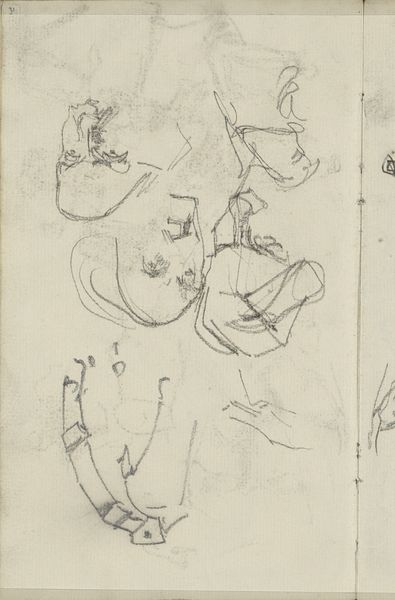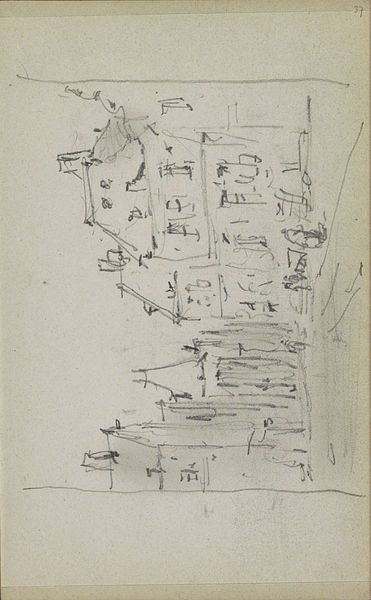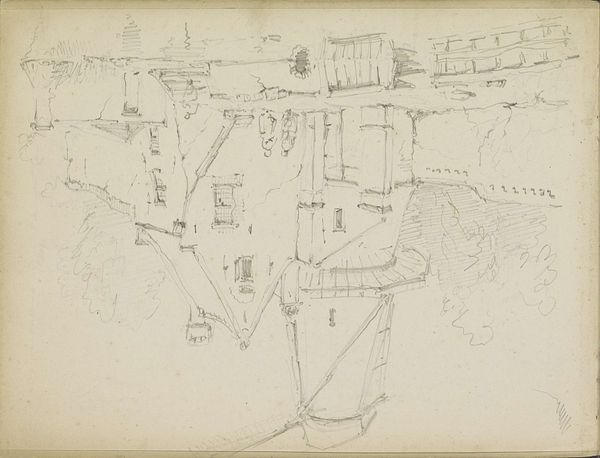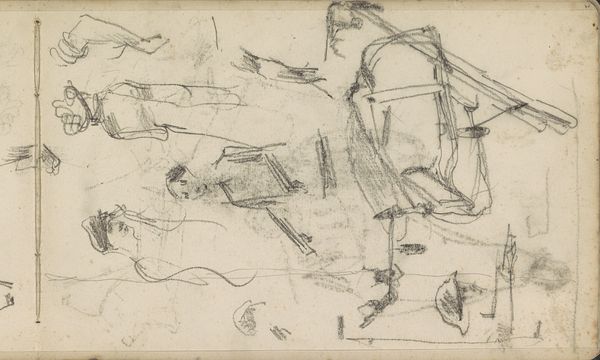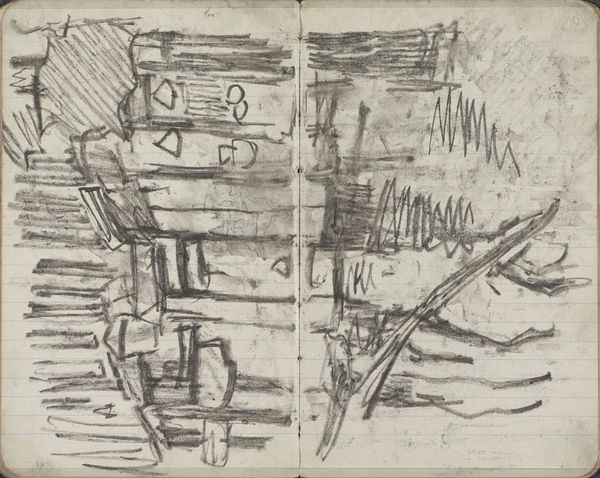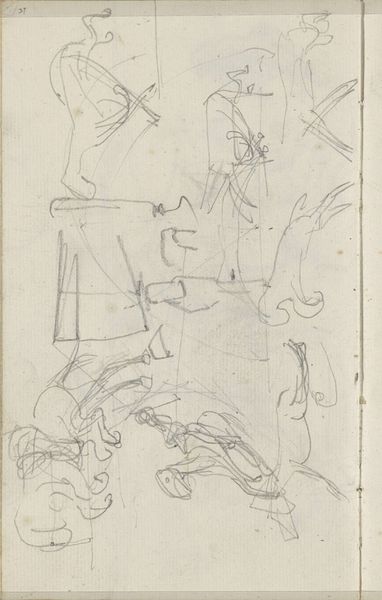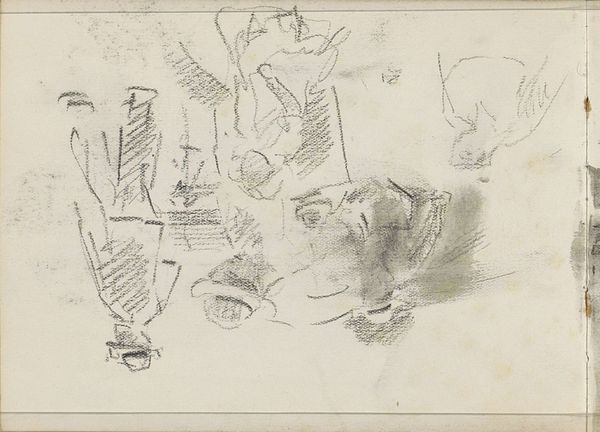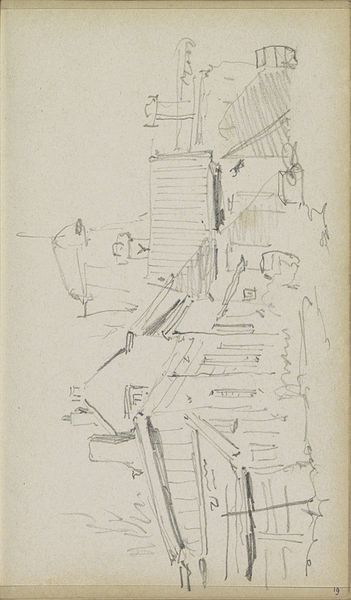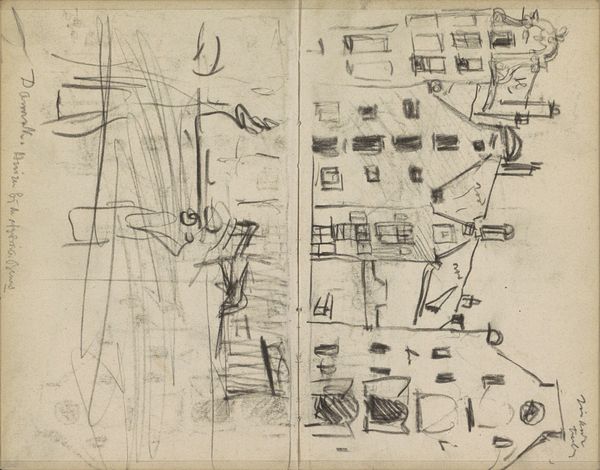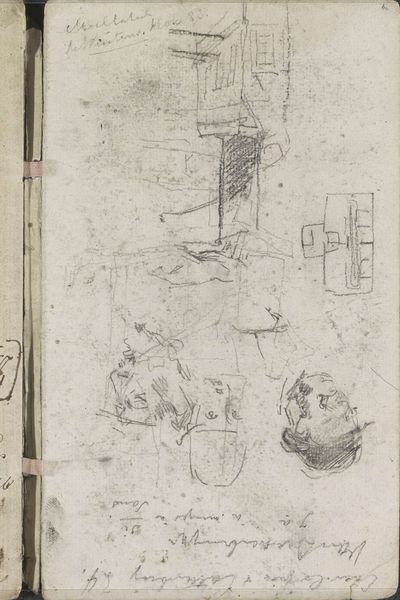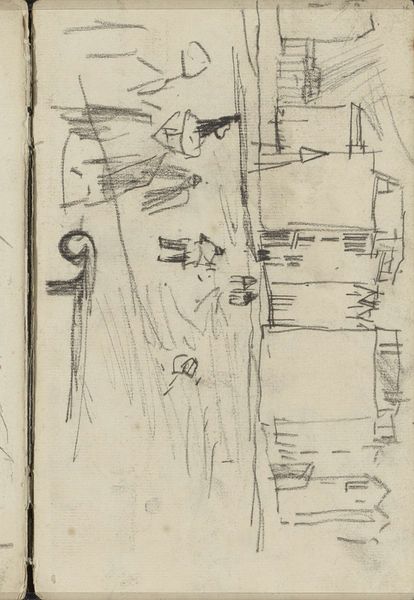
drawing, ink, pen
#
drawing
#
pen illustration
#
pen sketch
#
figuration
#
linework heavy
#
ink
#
sketchwork
#
geometric
#
pen-ink sketch
#
line
#
pen work
#
sketchbook drawing
#
pen
#
history-painting
#
academic-art
Dimensions: height 165 mm, width 222 mm
Copyright: Rijks Museum: Open Domain
Giuseppe Barberi made this pen and ink drawing titled "Harnasonderdelen en plattegrond," which translates to "Armor parts and plan," sometime in the late 18th or early 19th century. It depicts an array of armor components alongside what appears to be a floor plan, all meticulously rendered with accompanying notations. What can we learn from this seemingly technical drawing about the time in which it was made? Italy in the 18th century was a place defined by its fractured political landscape and the waning influence of its once-mighty city-states. While the era of knights in shining armor had long passed, the symbols of chivalry and military prowess continued to hold cultural significance, particularly among the aristocracy. Barberi’s drawing, with its detailed renderings of armor, could have served multiple purposes, from documenting historical artifacts to designing theatrical costumes. Either would have been needed as Italy’s rich artistic traditions and elaborate displays of power increasingly took center stage. To fully appreciate this work, further research into Barberi’s career and the cultural context would be invaluable. The true meaning of art always remains contingent on the social and institutional forces that shaped its creation.
Comments
No comments
Be the first to comment and join the conversation on the ultimate creative platform.
